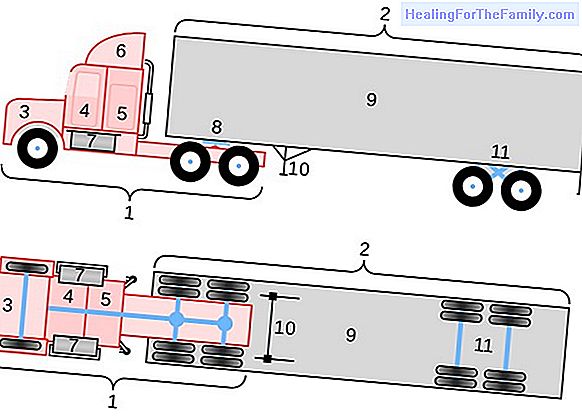8 Strategies to act against a child tantrum
Dealing with a child's tantrum is not easy. These are complicated moments in which it is important to know how to act before children and have the necessary arguments to avoid two common mistakes: overdoing or doing nothing. Ra The tantrum usually has its peak around 2 years. It is the child's way o
Dealing with a child's tantrum is not easy. These are complicated moments in which it is important to know how to act before children and have the necessary arguments to avoid two common mistakes: overdoing or doing nothing. Ra The tantrum usually has its peak around 2 years. It is the child's way of handling his emotions.
In this way channel your anger, anger or frustration. It is easy to detect a tantrum: the child throws himself to the ground, the shouting happens, he kicks, he hits himself or what he finds around him, he hangs on our legs or he can even hit and insult.
8 ways to react to a child's temper

-Anotice:
parents can detect those signs that indicate that a tantrum is going to be triggered and we can avoid them, for example, not passing in front of the toy store or the park if we can not go or leave the purchase for a time when we are not with the children. -be more flexible
: sometimes parents resort too much to 'no' and we put too many rules and limits that frustrate children and make them have a tantrum. Before denying him so many things, it is important to think if we exceed authoritarians.Do not argue with the child:
in those moments of great tantrum in which you do not listen and only scream, it is better to remain impassive and firm, not to show the child that we are desperate or nervous. Do not pay too much attention to what is happening and wait for it to calm down, even if you are on the street and are subjected to reproachful looks. -Keep calm:
Even if the child screams, do not raise your tone of voice or get nervous. Patience is our great ally in those cases. If the situation allows it and the child can listen, we can take him by the shoulders, try to look us in the eye and explain calmly, for example, why we have to go home and we can not continue playing in the park. -Avoid hurting yourself:
If the child is aggressive, tries to hurt himself or someone else, we should take him in his arms and keep calm. We will not shake him or shout, we will only hold him until he calms down. O -Offer alternatives : in case the anger is increasing it is convenient to offer another activity that you like, before the big tantrum breaks out. For example, if you can not continue playing in the park, you can play at home because you are going to take out your favorite paintings and you can make a great drawing. D -Dialogue with the child:
when the tantrum has passed is when we can talk to him and explain why you made that decision, what he did wrong and why he should not behave like that.-Do not give importance to the tantrum in front of the child:
if we speak in front of others or the same child constantly about the tantrum he organized or the tantrum that he set up somewhere we will be giving him a chance to know how much that behavior affects us. He will know that we are afraid of that moment and that he can do it again. It is convenient to avoid phrases of the type: to see if today you do not ride a shtick or you do not know the one that yesterday the child in the supermarket messed up.












